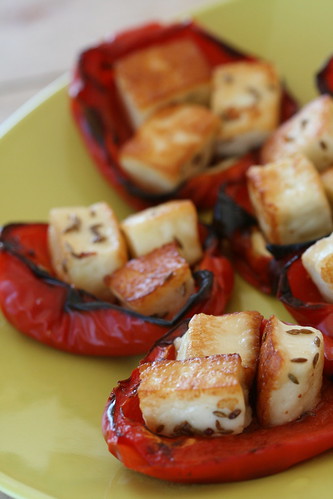
Photo from April 2008
I - finally - made some hatchapuri. Hatchapuri, for those of you who don't know it, is a famous Georgian cheesebread. Somehow - not sure where I got the guts to do that! - I ended up wholeheartedly defending Georgian cuisine in general and hatchapuri recipe in particular over at Kuidaore during my very early blogging days. Il Forno's Alberto wrote about hatchapuri (or khachapuri, as he spells it) already in early 2004. More recently, my fellow Edinburgh blogger (until I moved back home, that is) Melissa so eloquently wrote about it on The Traveler's Lunchbox. There's a recipe in the latest Nigella book, as well as Darra Goldstein's almost scholarly book The Georgian Feast. This very cheesebread is positively 'in' at the moment. However, as both of these books of mine are still in sort of transit from Edinburgh to Tallinn and I won't get my hands on them until Christmas, then I had to look elsewhere for a suitable recipe. The simple recipe below is adapted from an Estonian food enthusiast who writes under the name of Volks Vaagen, who has got it from a Georgian lady called Natalya.
Now, before we proceed, remember that just like there are loads of different pizzas, there is a huge range of hatchapuri breads out there. The type and name of your cheesebread depends on where in Georgia you're trying to bake and/or eat it. There's Imeruli hatchapuri (flat, round bread, using imeruli cheese), Acharuli/Adjaruli hatchapuri (a suluguni cheese bread 'boat' topped with raw egg and then cooked; sometimes also referred to as Georgian pizza), Achma hatchapuri (a very rich and layered cheesebread) , Megruli hatchapuri (has cheese both inside and outside the bread), Svanuri hatchapuri (also known as chvishtar), Rachuli hatchapuri, Phenovani/Penovani hatchapuri (with a flaky pastry, formed as a triangle), Ossuri hatchapuri (filled with cheese and mashed potatoes), Guruli hatchapuri (thick and crunchy, with lots of cheese, formed as a log).
I'm pretty sure the list is not exhaustive (I'll report back when I compile a definitive list of various hatchapuris:)
You should really use imeruli/emeruli cheese or suluguni cheese for this recipe, although brynza cheese would work, too, as it is similarly salty. I used suluguni here. Suluguni is a whole milk cheese from Georgia (as in the Caucasus, and not in the US, obviously) , which can be grilled (I'm thinking of using suluguni instead of halloumi in the recipe for roasted red peppers with cumin-scented halloumi). Luckily, there's a considerable Abkhasian Georgian community in Estonia, and they've set up a small suluguni cheese factory in Kehra near Tallinn. It's not readily available in supermarkets, but you can easily buy that at local markets here. If you live in the US or UK, then try the Russian stores. Or see what alternatives Melissa and Alberto recommend.
I'm pretty sure it would be a fantastic accompaniment to Chakhohbili, the Georgian chicken stew with loads of herbs and wine. There's garlic in the cheese filling of this hatchapuri, which gave a real extra kick to the flavour. Feel free to leave it out, if you prefer a milder taste sensation.
Georgian cheese bread Hatchapuri
(Hatšapuri)
Yields 6 generous wedges.

For the dough:
250 grams sour cream
150 grams butter or margarine, melted
1 egg, slightly whisked
350 g plain flour (or a bit more, if necessary) (about 600 ml)
a pinch of salt
0.25 tsp baking soda
1 tsp sugar
For the cheese filling:
200 grams suluguni cheese, coarsely grated
1 egg, whisked
2 Tbsp sour cream
2 cloves of garlic, finely chopped (optional)
Mix sour cream and melted butter. Add salt, baking soda and sugar, whisk in the egg and add flour in installments. Knead slightly, until you've got a soft & pliable dough. Divide into two, roll each into a large circle (25 cm or so).
Grate the cheese, mix with egg, sour cream and chopped garlic.
Place one dough circle on a baking sheet covered with parchment paper. Spread the cheese filling on top, leaving about 1 cm from the edges clean. Cover with the other dough circle, press the edges firmly together.
Brush with egg or sour cream, pierce with a fork here and there. Bake at 200C for 20-30 minutes, until hatchapuri is lovely golden brown colour.
















